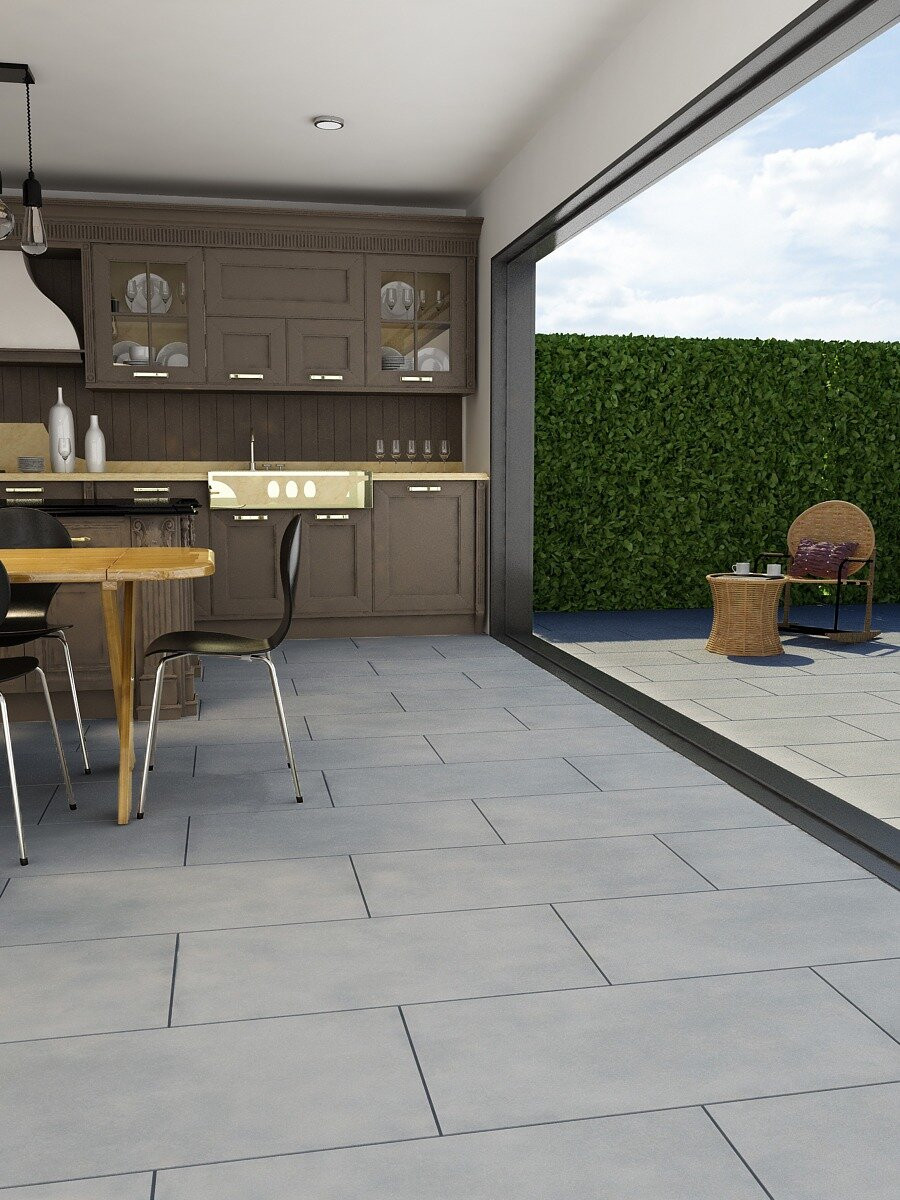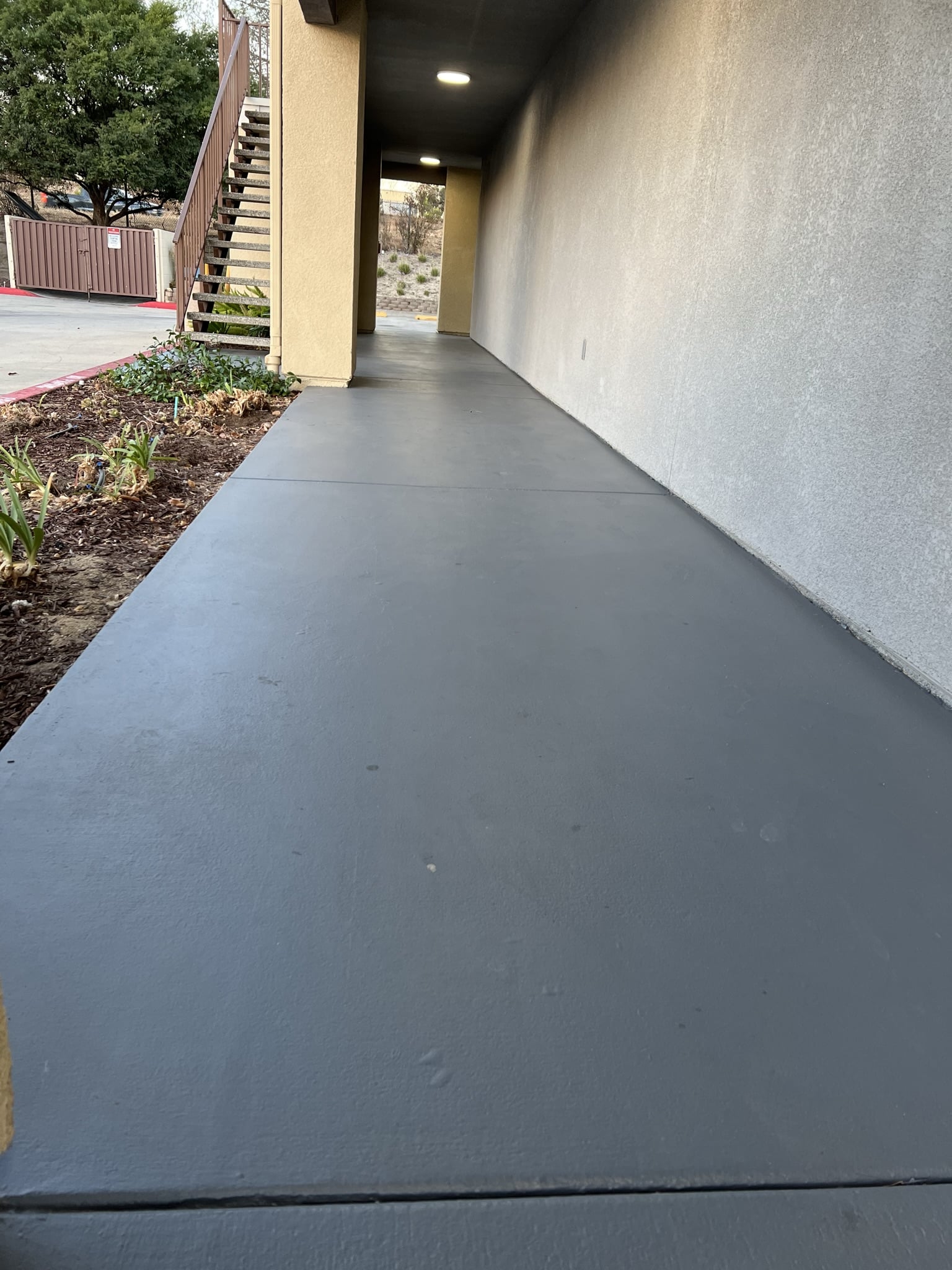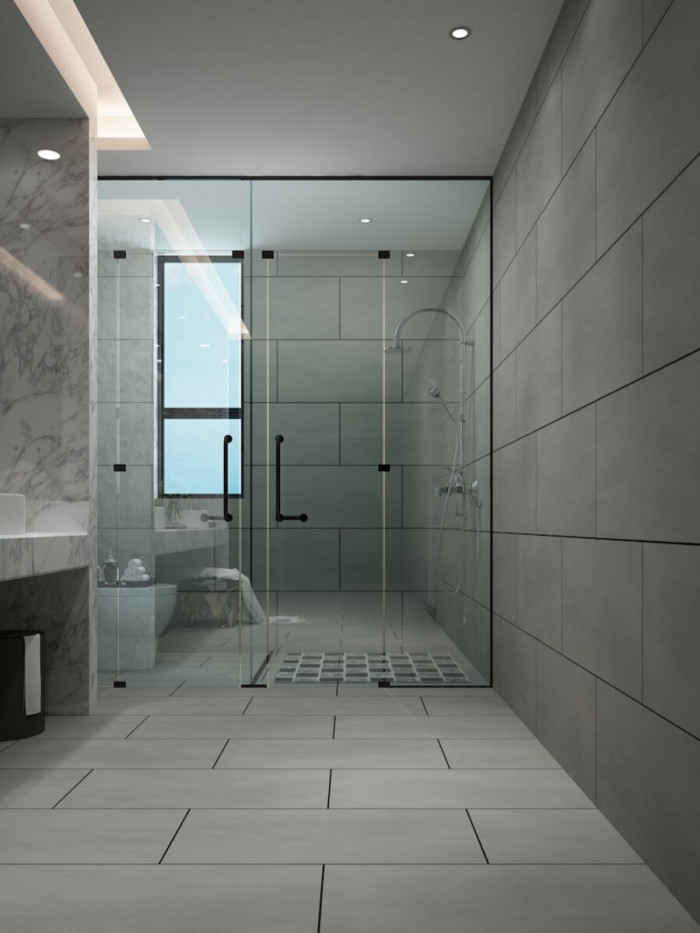The Benefits of Installing Non-Slip Concrete Floors
When it comes to choosing flooring for residential, commercial, or industrial spaces, safety is always a top priority. Non-slip concrete floors offer an ideal balance between durability, aesthetics, and slip resistance, making them a popular choice for various applications. Installing non-slip concrete flooring ensures a safer environment while also enhancing the space’s overall functionality.
- Enhanced Safety
The primary benefit of non-slip concrete floors is their ability to prevent accidents, particularly in areas prone to wet conditions. Whether it’s a residential garage, industrial workspace, or commercial kitchen, these floors reduce the risk of slips and falls, which can lead to serious injuries. - Durability and Longevity
Concrete is one of the most durable flooring materials available. Non-slip finishes enhance this durability without compromising on safety. Once installed, non-slip concrete floors can last for decades with minimal maintenance, making them an excellent long-term investment for high-traffic areas. - Versatility in Design
While concrete floors are often associated with industrial or utilitarian spaces, non-slip concrete can be finished in a variety of ways to complement different styles. From polished concrete to stamped designs, you can achieve both a stylish and safe floor, making it suitable for homes, offices, and retail spaces. - Cost-Effective Solution
Compared to other flooring options, non-slip concrete is highly cost-effective. It’s less expensive than natural stone, hardwood, or ceramic tiles and requires fewer repairs over time. Its initial installation cost is reasonable, and its long lifespan ensures value for money. - Low Maintenance Requirements
Non-slip concrete floors are easy to clean and maintain. Regular sweeping and occasional mopping are often enough to keep the floors in excellent condition. The non-slip texture or coating also makes it more resistant to dirt buildup, stains, and moisture, making it a practical choice for busy environments. - Environmental Benefits
Concrete floors, particularly those with non-slip finishes, are an eco-friendly option. They reduce the need for additional materials, and because concrete is locally sourced in most cases, it reduces the environmental impact associated with transportation. Concrete’s thermal properties can also help reduce energy consumption in buildings by maintaining consistent indoor temperatures.

Popular Finishing Techniques for Non-Slip Concrete Floors
Concrete floors can be made non-slip using a variety of finishing techniques, each providing different textures, durability levels, and aesthetic qualities. Choosing the right finishing technique depends on the specific environment and desired appearance. Below are some of the most popular methods used to create non-slip surfaces on concrete floors.
Broom Finish
One of the most common and cost-effective methods for creating non-slip concrete is the broom finish. After the concrete is poured and smoothed, a broom is dragged across the surface to create fine ridges that provide traction. This technique is often used in outdoor spaces like driveways, patios, and sidewalks where slip resistance is important.
Exposed Aggregate Finish
Exposed aggregate is another popular finish that adds both texture and aesthetic appeal to concrete floors. The process involves removing the top layer of the concrete to reveal the embedded stones or gravel underneath. The rough surface created by the aggregate provides excellent slip resistance, making it ideal for pool decks, walkways, and outdoor stairs.
Stamped Concrete
Stamped concrete offers the ability to mimic the appearance of more expensive materials like brick, stone, or wood while maintaining the durability of concrete. The stamping process also creates texture on the surface, which enhances grip. It’s commonly used in residential patios, driveways, and walkways where aesthetics and slip resistance are equally important.
Trowel Finish with Additives
Trowel finishes are typically smooth, but when non-slip additives like silica or aluminum oxide are mixed into the surface during the finishing process, they create a slip-resistant floor. This method is particularly useful for indoor spaces like basements or garages where a smooth appearance is desired but slip resistance is still necessary.
Polished Concrete with Non-Slip Coatings
Polished concrete is known for its sleek, shiny finish, which can be made non-slip by adding a specialized anti-slip coating during or after the polishing process. This technique allows you to maintain the modern look of polished concrete while ensuring safety in areas where spills or moisture are a concern.
Rock Salt Finish
A rock salt finish is achieved by pressing coarse rock salt into the surface of wet concrete and then washing it away once the concrete has set. This leaves behind small pits and textures that provide excellent traction. It’s a popular choice for outdoor areas like pool decks and patios, where water exposure is common.
Non-Slip Coatings vs. Textured Concrete: What’s the Difference?
When it comes to creating non-slip concrete floors, there are two primary methods to consider: applying non-slip coatings or choosing a textured concrete finish. While both options improve floor safety, they each offer unique benefits and considerations. Understanding the differences between these two methods can help you determine which is best for your space.
Non-Slip Coatings Offer Flexibility
Non-slip coatings can be applied to existing concrete floors, providing a flexible solution for enhancing slip resistance without needing to pour new concrete. These coatings are available in a variety of forms, including epoxy, polyurethane, and acrylic, and can be customized with textures or additives to improve grip.
Textured Concrete Provides Built-In Safety
Textured concrete, on the other hand, is created during the installation process, using finishing techniques like brooming, stamping, or exposing aggregate. The texture is built into the floor, meaning that the slip resistance is a permanent feature. This can be advantageous for areas that see constant moisture or traffic, such as driveways or pool decks.
Durability and Longevity
Both non-slip coatings and textured finishes offer durable solutions, but textured concrete generally has an advantage in terms of longevity. Since the texture is integrated into the surface, it won’t wear down over time like a coating might. However, high-quality coatings, when properly applied and maintained, can also last many years.
Maintenance Requirements
Non-slip coatings are relatively easy to clean and maintain, often requiring nothing more than regular sweeping and mopping. Textured concrete may trap more dirt and debris due to its rough surface, requiring more frequent cleaning and attention. Power washing or scrubbing may be needed to maintain the textured concrete’s appearance and slip resistance.
Aesthetic Considerations
Coatings offer a smoother finish, which can be preferable in modern or minimalist spaces. They also come in various colors and finishes, allowing for more design flexibility. Textured concrete, while slightly rougher, offers a more natural look, especially with finishes like exposed aggregate or stamped designs that mimic stone or brick.
Cost Differences
Non-slip coatings are often more affordable upfront because they can be applied to existing floors without the need for new concrete. Textured concrete requires more labor and materials during installation, making it a higher initial investment. However, the longevity of textured finishes may offset these costs over time.
Best Applications for Non-Slip Concrete Floors
Non-slip concrete floors are versatile and suitable for a wide range of applications, both indoors and outdoors. From residential homes to commercial and industrial settings, these floors provide enhanced safety without compromising on durability or aesthetics. Here are some of the best applications for non-slip concrete floors.
Driveways and Sidewalks
Driveways and sidewalks are some of the most common places where non-slip concrete is used. Outdoor surfaces are often exposed to rain, snow, and ice, making them slippery and dangerous. Non-slip concrete finishes like broom or exposed aggregate provide the necessary traction to keep these areas safe year-round.
Pool Decks
Pool decks are another popular application for non-slip concrete. These areas are constantly exposed to water, making slip resistance a top priority. Stamped concrete or rock salt finishes are ideal for pool decks, offering both aesthetic appeal and enhanced safety in wet conditions.
Garage Floors
In residential settings, garages can benefit from non-slip concrete finishes, especially in areas where oil spills or moisture are common. A polished concrete floor with an anti-slip coating provides a smooth, easy-to-clean surface that still offers the necessary grip for safety.
Industrial and Commercial Workspaces
Non-slip concrete floors are essential in industrial and commercial settings, where safety regulations often require slip-resistant surfaces. Whether it’s a warehouse, factory, or kitchen, non-slip coatings or textured concrete provide the necessary durability and slip resistance to protect workers and visitors.
Entryways and Walkways
Entryways and walkways, whether in residential or commercial settings, can become hazardous when wet. A textured or coated non-slip concrete floor ensures these high-traffic areas remain safe, even during inclement weather. These areas also benefit from the aesthetic versatility of non-slip finishes, which can be customized to match the surrounding design.
Patios and Outdoor Living Spaces
Outdoor living spaces, such as patios and terraces, can also benefit from non-slip concrete flooring. With options like stamped or stained concrete, homeowners can create a stylish yet functional space that resists slips, even when wet. These finishes are particularly popular in climates where rain is frequent or where snow and ice are concerns during the winter months.
How to Choose the Right Non-Slip Concrete Finish for Your Space
Choosing the right non-slip concrete finish for your space depends on a variety of factors, including the location, desired aesthetic, and maintenance requirements. With so many options available, it’s important to evaluate your specific needs to ensure the flooring is both functional and visually appealing. Here are some considerations to help you choose the best non-slip concrete finish.
Evaluate the Space’s Purpose
The first step in selecting the right non-slip finish is to evaluate the purpose of the space. For outdoor areas like driveways or sidewalks, a broom finish or exposed aggregate is ideal for maximum traction. For indoor spaces like garages or kitchens, a smoother polished finish with an anti-slip coating may be more appropriate.
Consider Environmental Conditions
Climate and weather conditions play a major role in determining the best non-slip finish. In areas with frequent rain, snow, or ice, a highly textured surface may be necessary to prevent slips. For pool decks or other areas constantly exposed to water, a rock salt or stamped finish can provide the necessary grip without compromising aesthetics.
Determine Desired Aesthetic
Non-slip concrete doesn’t have to be purely functional; it can also be a design element. If you’re aiming for a modern, sleek look, a polished concrete floor with a non-slip coating may be the best choice. For more rustic or natural aesthetics, consider stamped concrete or exposed aggregate finishes that mimic the appearance of stone or brick.
Factor in Maintenance Needs
Some non-slip finishes require more maintenance than others. Textured surfaces like exposed aggregate or rock salt finishes may trap more dirt and debris, requiring regular cleaning. Smooth, coated floors are generally easier to clean but may need occasional reapplication of the non-slip coating. Consider your willingness to perform maintenance when selecting a finish.
Assess Budget Constraints
Budget is another important consideration when choosing a non-slip concrete finish. Textured finishes like stamped or exposed aggregate tend to be more expensive due to the additional labor and materials required during installation. Coatings, on the other hand, can be applied to existing concrete floors, making them a more affordable option for those working with limited funds.
Consult with Professionals
If you’re unsure which finish is best for your space, it’s a good idea to consult with a professional concrete contractor. They can assess your space, provide recommendations based on your needs and budget, and ensure the installation is done correctly for maximum safety and durability.
Maintenance Tips for Non-Slip Concrete Floors
Once you’ve installed non-slip concrete floors, proper maintenance is essential to ensure they remain safe, functional, and visually appealing. Different finishes require different care routines, but these general maintenance tips will help you keep your non-slip floors in top condition.
Regular Sweeping and Cleaning
Dirt, debris, and moisture can accumulate on non-slip surfaces, reducing their effectiveness over time. Regular sweeping and mopping are essential to keep the floor clean and prevent buildup. For outdoor spaces, power washing can help remove stubborn dirt or algae that may accumulate on textured surfaces.
Use Mild, Non-Abrasive Cleaners
When cleaning non-slip concrete floors, it’s important to use mild, non-abrasive cleaners that won’t damage the surface. Harsh chemicals or abrasive scrubbers can wear down the floor’s finish, reducing its slip resistance. Opt for gentle cleaners and follow the manufacturer’s recommendations for specific products.
Inspect for Wear and Tear
Over time, non-slip coatings or finishes may wear down, especially in high-traffic areas. Regularly inspect your floors for signs of wear, such as smooth patches or discoloration. If you notice that the floor is becoming less slip-resistant, it may be time to reapply a non-slip coating or reseal the surface.
Seal the Floor if Necessary
Some non-slip finishes, particularly those involving exposed aggregate or stamped concrete, may require sealing to maintain their slip resistance and durability. Sealing the floor helps protect it from moisture, dirt, and stains while also preserving its texture. Consult with a professional to determine how often your floor should be sealed.
Address Stains and Spills Immediately
Spills and stains should be addressed immediately to prevent them from seeping into the concrete and compromising its texture. Use a damp cloth or mop to clean up spills as soon as they occur, and avoid letting water pool on the surface for extended periods, especially in outdoor areas.
Reapply Non-Slip Coatings When Needed
If your floor has a non-slip coating, it’s important to reapply it periodically to maintain the slip resistance. Coatings can wear down over time, especially in areas with heavy foot traffic or exposure to moisture. Consult with the manufacturer or a professional installer to determine how often the coating should be reapplied for optimal performance.
Affordable Solutions for Non-Slip Concrete Flooring
Non-slip concrete flooring doesn’t have to be expensive. There are several budget-friendly options available that provide safety and durability without breaking the bank. Whether you’re renovating a residential, commercial, or industrial space, these affordable solutions can help you achieve non-slip concrete flooring within your budget.
Broom Finish Concrete
A broom finish is one of the most cost-effective non-slip options for concrete floors. This technique involves using a broom to create texture on the surface of the freshly poured concrete. It’s a simple and affordable solution that provides excellent slip resistance, making it ideal for outdoor spaces like driveways and sidewalks.
Rock Salt Finish
Another affordable option is the rock salt finish, which involves pressing rock salt into the wet concrete and then washing it away to create a textured surface. This technique provides slip resistance and a unique, natural appearance, making it a popular choice for pool decks, patios, and other outdoor areas.
Non-Slip Concrete Paint
For those looking for a quick and affordable fix, non-slip concrete paint is an excellent option. This specialized paint contains additives that provide traction, making it ideal for indoor spaces like basements or garages. It’s easy to apply and available in a variety of colors, allowing you to customize the look of your floor.
Rubberized Non-Slip Coatings
Rubberized coatings can be applied to existing concrete floors to create a slip-resistant surface. These coatings are affordable and easy to install, providing a durable and safe flooring solution for both indoor and outdoor areas. Rubberized coatings are particularly effective in wet environments like pool decks or bathrooms.
Peel-and-Stick Non-Slip Tiles
For a quick and budget-friendly solution, peel-and-stick non-slip tiles are an excellent choice. These tiles can be applied directly to the surface of your existing concrete floor, providing immediate slip resistance. They’re available in a variety of textures and colors, making them a versatile and affordable option for both residential and commercial spaces.
DIY Acid Etching
Acid etching is a cost-effective way to create a textured surface on existing concrete floors. By applying an acid solution to the concrete, you can create a rough, non-slip finish that improves traction. This DIY solution is ideal for homeowners or businesses looking for an affordable way to enhance the safety of their concrete floors without hiring a professional.
Related Posts:
- Interior Concrete Floor Paint Ideas
- Concrete Floor Epoxy Crack Filler
- Concrete Floor Basement Ideas
- Painting Concrete Floor With Epoxy
- Outdoor Concrete Floor Paint Ideas
- Concrete Floor Painting Tips
- Outdoor Concrete Floor Finishes
- Non Slip Concrete Floor
- Concrete Floor Epoxy Coating
- Outdoor Concrete Floor Tiles





